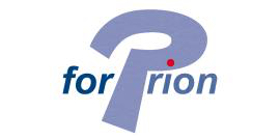FORPRION
BAVARIAN RESEARCH ASSOCIATION PRIONS

LMU 5 Analysis of Bovine and Human Prions in Cell Culture Systems for Diagnostic, Analytical and Therapeutic Purposes
http://www.virologie.med.tum.de
We are using prion-infected cell culture systems of mainly murine origin for studying the molecular and cellular biogenesis and pathogenesis of mouse prions and for devising novel therapeutic approaches against prion infections (Schätzl et al., 1997; Gilch et al., 2001, 2003 and 2006; Nunziante et al., 2003 and 2005; Gilch & Schätzl, 2003; Ertmer et al., 2004 and 2007; Tatzelt & Schätzl, 2007). Our recent studies intended to establish highly susceptible cell lines able to propagate various prion strains were extended and improved. The cell culture isolation and propagation of individual prions for subsequent molecular and phenotypical analysis, in analogy to standard methods for viral and bacterial agents, might be beneficial for certain purposes. We used existing and newly developed cell culture systems to address diagnostic, analytical and therapeutic studies. To achieve a high sensitivity of recipient cells, we employed sub-cloning of cultured cells which otherwise differ significantly in their susceptibility for prion infection. Furthermore, the detection of PrPSc as surrogate marker for prion infection was improved by establishing dot-blot analysis (F. König; Bachelor thesis) and an immunofluorescence assay under conditions specific for PrPSc detection. The latter enables studies on PrPSc infection on a single-cell level and will support the detection of strain differences. Since over-expression of PrPc might sometimes increase the conversion rate in susceptible cells leading to a faster accumulation of PrPSc, both lentiviral (C. Krammer, diploma thesis) and retroviral expression systems were established (Maas et al., submitted). Most cell lines proven to be susceptible to prion infection are of neuronal origin. Novel studies revealed that PrPSc is, beside neuronal cells, detectable in non-neuronal cell types (Vorberg et al., 2004). We extended our models for prion infection and analysed the ability of muscle cells, neuroendocrine cells, fibroblasts and macrophage or microglial cell lines to transiently or stably propagate PrPSc, either strain RML or 22L. In particular, experiments with the neuroendocrine cell line SS-1 and the insulinoma cell lines -HC8 and -TC3 provided interesting results. Upon exposure to prion-infected brain homogenate or culture media derived from prion-infected SN56 (22L) or ScGT-1 (RML) cells they down-regulated their endogenous PrPc expression. This subsequently led to abortion of prion generation and offers a new self-healing mechanism for cells (Y. Aguib; Master thesis; Aguib et al., manuscript in preparation). In collaboration with Prof. E. Wolf (Genecenter Munich) cell culture studies addressing BSE infection of bovine fibroblasts derived from fetal tissue of PrP+/+ cows and their PrP0/0 counterparts were started. Primary cultures were successfully immortalised and infection with BSE infected brain homogenate was initiated. Within the last period of funding we could define a novel class of anti-prion compounds which interfere with intracellular signal transduction pathways. We identified imatinib (Gleevec), which inhibits the tyrosine kinases c-abl, c-kit and PDGF-receptor, as highly effective inhibitor of PrPSc propagation. The prionostatic effect of Glivec is mediated by the inhibition of c-abl kinase, as inhibition of both alternative targets of imatinib did not affect PrPSc propagation. In contrast to many other anti-prion compounds, imatinib does not interfere with PrPc localisation, trafficking and biochemical properties. Unexpectedly, we found that it affects pre-existing PrPSc by significantly decreasing its cellular half life-time (Ertmer et al., 2004), which is due to the activation of autophagy by imatinib (Ertmer et al, 2007). Further studies in cell culture are ongoing with novel and even more potent derivatives. In vivo studies initiated in collaboration with Prof. M. Klein and Dr. Flechsig (Würzburg) in mice revealed a delayed neuroinvasion of prions after peripheral infection by inhibition of peripheral prion propagation (Yun et al., 2007; J. Neurovirology, in press). Taken together, we have established new cell cultures models for prion infection useful for study of prion therapy and diagnosis and molecular analysis of isolated prions. The discovery of the anti-prion effect of imatinib and the elucidation of the underlying mechanism related to autophagy opens new perspectives for prion therapy.



